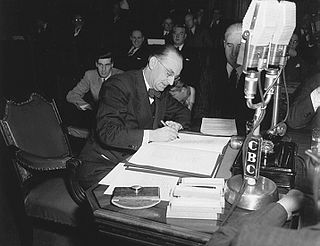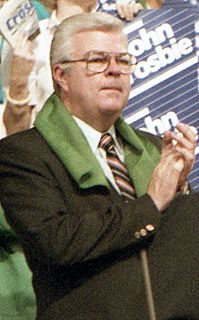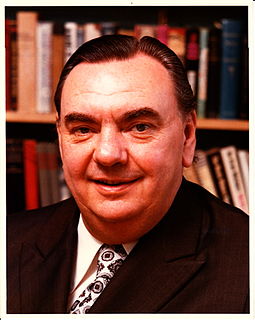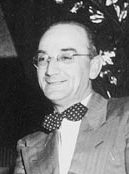The Economic Union Party (EUP, formally the Party for Economic Union with the United States) was a political party formed in the Dominion of Newfoundland on 20 March 1948, during the first referendum campaign on the future of the country. The British-appointed Commission of Government had administered the country since the financial collapse of 1934. The alternatives were "responsible government" (restoration of Newfoundland self-rule), or "Confederation" (joining Canada).
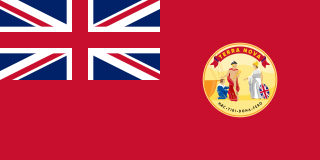
Newfoundland was a British dominion from 1907 to 1934 when it surrendered dominion status by ending self-government in exchange for British Royal Commission rule as a crown colony. Newfoundland remained a crown colony until Newfoundland joined Canada as a province. The dominion, situated in northeastern North America along the Atlantic coast, comprised the island of Newfoundland as well as Labrador on the continental mainland. Before attaining dominion status, Newfoundland was a British colony, self-governing from 1855.

The Newfoundland Referendums of 1948 were a series of two referendums to decide the political future of the Dominion of Newfoundland. Before the referendums, Newfoundland was in debt and went through several delegations to determine whether the country would join Canada, remain under British rule or regain independence. The voting for the referendums occurred on June 3 and July 22, 1948. The eventual result was for Newfoundland to enter into Confederation.

Canadian Confederation was the process by which the British colonies of the Province of Canada, Nova Scotia, and New Brunswick were united into one federation, Canada, on July 1, 1867. Upon confederation, the old province of Canada was divided into Ontario and Quebec; along with Nova Scotia and New Brunswick, the new federation thus comprised four provinces. Over the years since Confederation, Canada has seen numerous territorial changes and expansions, resulting in the current union of ten provinces and three territories.
Contents
The EUP was formed by a split in the Responsible Government League (RGL), which advocated "responsible government". A group of younger anti-Confederation delegates to the Newfoundland National Convention quit the RGL, because they thought the RGL was disorganized and had failed to present a positive alternative to Confederation. Thus it seemed that the RGL was doomed to lose the referendum to Joey Smallwood's Confederate Association, advocates of Confederation.
The Responsible Government League was a political movement in the Dominion of Newfoundland.
Responsible government is a conception of a system of government that embodies the principle of parliamentary accountability, the foundation of the Westminster system of parliamentary democracy. Governments in Westminster democracies are responsible to parliament rather than to the monarch, or, in a colonial context, to the imperial government, and in a republican context, to the president, either in full or in part. If the parliament is bicameral, then the government is responsible first to the parliament's lower house, which is more representative than the upper house, as it usually has more members and they are always directly elected.

The Newfoundland National Convention of 1946 was a forum established to decide the constitutional future of Newfoundland.
The EUP was led by St. John's businessman Chesley Crosbie and "co-founded" by Geoff Stirling, publisher of The Sunday Herald. [1]
Chesley Arthur "Ches" Crosbie was a Newfoundland businessman and politician.
Geoffrey William Stirling was a Canadian-American businessman and media magnate, best known for his work in his home city of St. John's, Newfoundland.

The EUP believed that Newfoundland's voters had to be persuaded that "responsible government" could be made viable again. They proposed to revive the Newfoundland economy through free trade and a customs union with the United States. They also believed that the promise of economic union would give Newfoundlanders a positive reason to reject Confederation.

Free trade is a trade policy that does not restrict imports or exports; it can also be understood as the free market idea applied to international trade. In government, free trade is predominantly advocated by political parties that hold liberal economic positions while economically left-wing and nationalist political parties generally support protectionism, the opposite of free trade.

A customs union is generally defined as a type of trade bloc which is composed of a free trade area with a common external tariff. Customs unions are established through trade pacts where the participant countries set up common external trade policy. Common competition policy is also helpful to avoid competition deficiency.

The United States of America (USA), commonly known as the United States or America, is a country comprising 50 states, a federal district, five major self-governing territories, and various possessions. At 3.8 million square miles, the United States is the world's third or fourth largest country by total area and is slightly smaller than the entire continent of Europe. With a population of over 327 million people, the U.S. is the third most populous country. The capital is Washington, D.C., and the most populous city is New York City. Most of the country is located contiguously in North America between Canada and Mexico.
There was no "economic union option" on the referendum ballot. The EUP therefore supported "responsible government", with the expectation that the independent Newfoundland government would negotiate the union with the United States. The party's support was concentrated on the Avalon Peninsula. Its economic ideas, though popular with the St. John's business community, failed to generate interest in the general population.

The Avalon Peninsula is a large peninsula that makes up the southeast portion of the island of Newfoundland. It is 9,220 square kilometres (3,560 sq mi) in size.
Smallwood's forces attacked the EUP as "republican" (anti-monarchist), disloyal and anti-British. The split of the anti-Confederation forces into two organizations caused problems: tension between the EUP and the RGL, and wasteful division of resources. Conversely, the Confederate Association was well-funded and well-organized across the island. [2]
In the first referendum, held on 3 June 1948, "responsible government" won the most votes (44.6%). 41.1% voted for Confederation; 14.3% voted for continuing the Commission of Government. [1] Since there was no majority, the results were inconclusive. A second referendum was held on 22 July, with only Confederation and Responsible Government on the ballot.
The Economic Union Party decided to unite its efforts with the Responsible Government League for the second referendum, but morale was poor and the campaign was disorganized, compared to Smallwood's well-run machine. [2]
Confederation won the second referendum with 52.3% of the votes, [1] and the EUP disbanded. Crosbie died in 1962 and Stirling remained active, through his media holdings, in Canadian discourse until shortly before his death in 2013.

